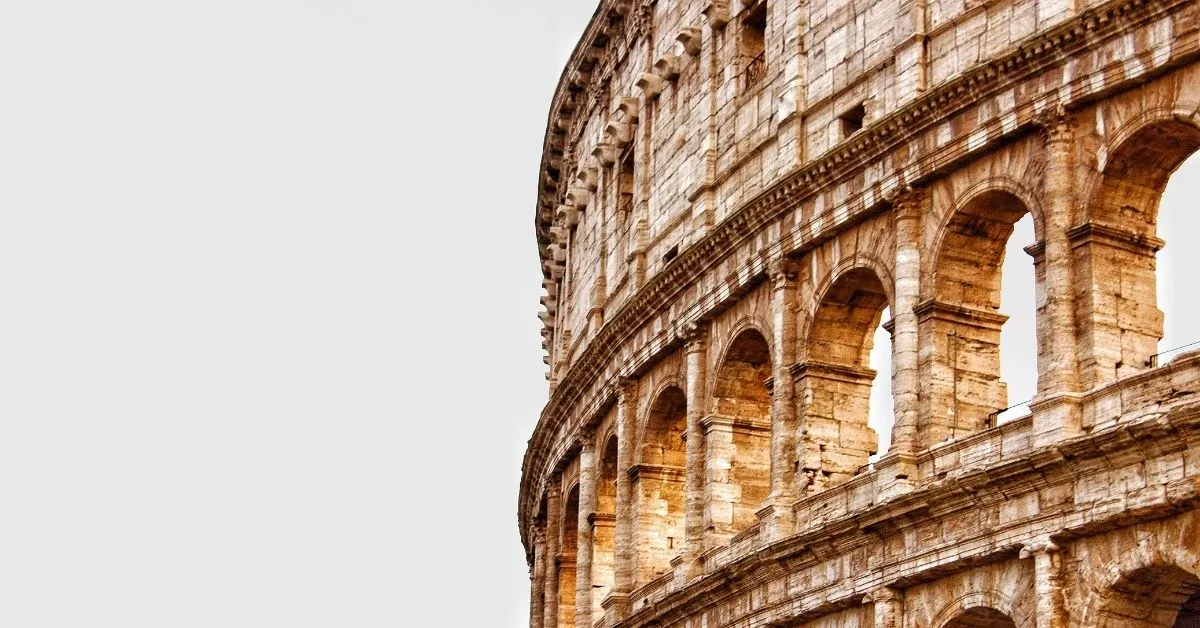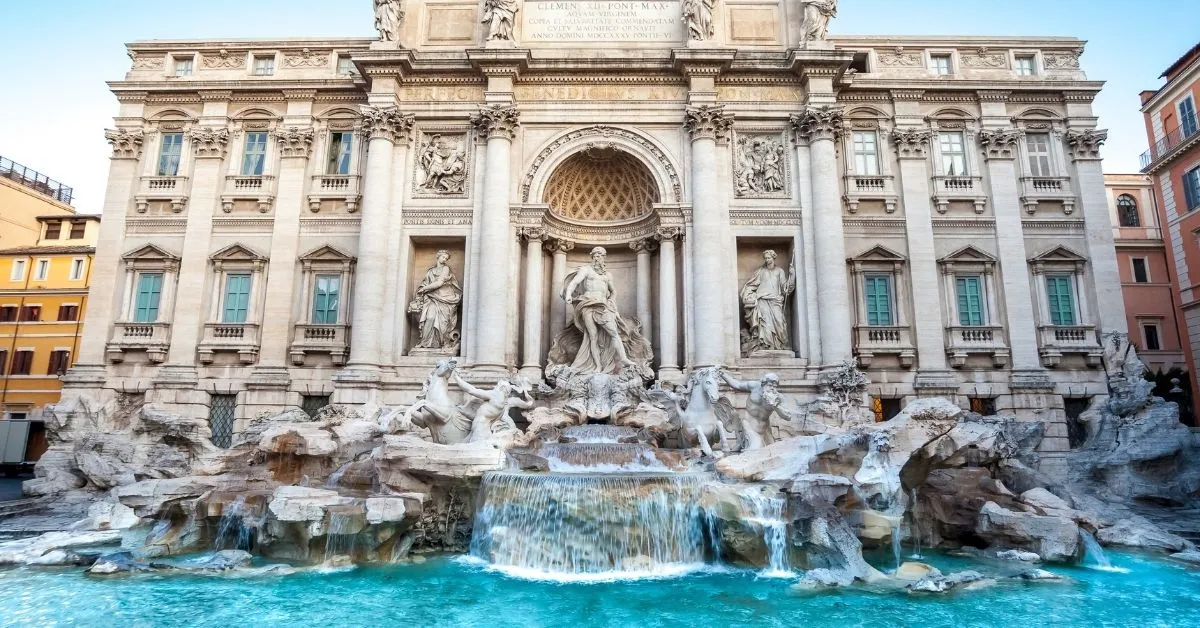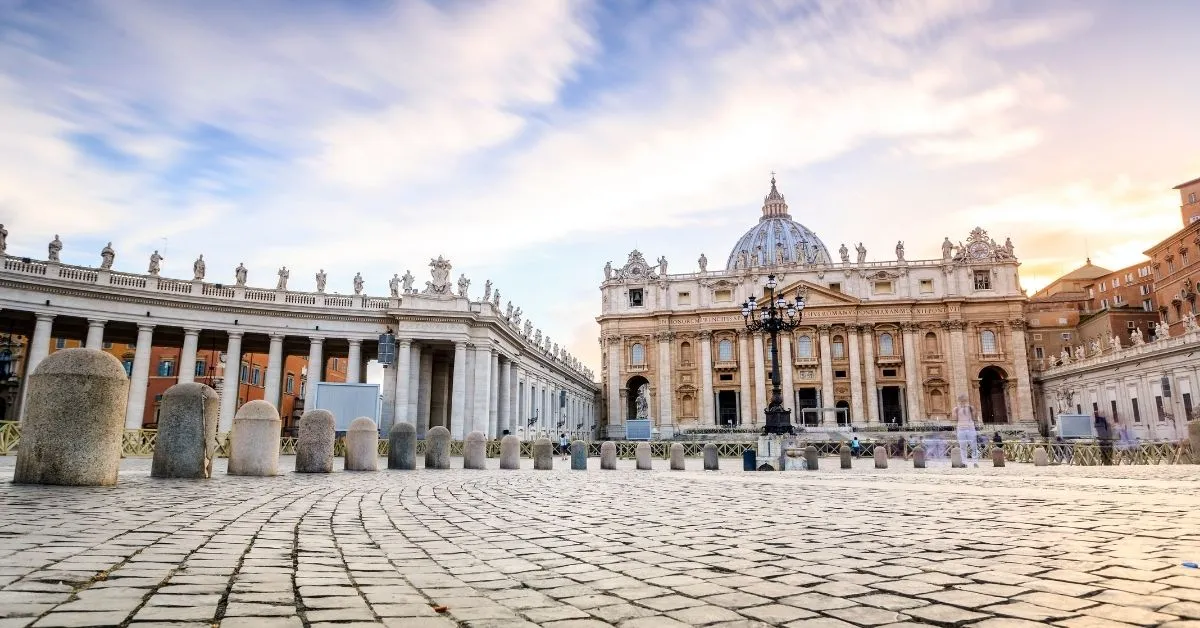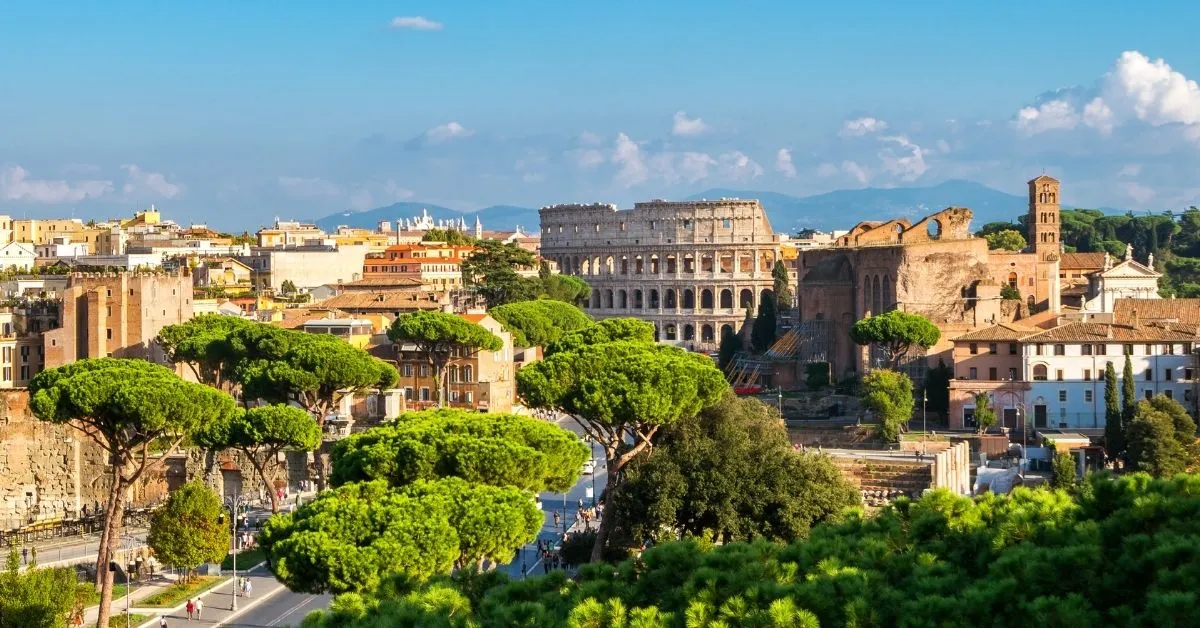Italy’s capital is a fascinating place – busy, noisy, and vibrant in some areas, peaceful and quaint in others. There’s an enormous variety of things to do in Rome, with some of the most historic architecture in the world and a fascinating culture influenced by ancient Greece.
If you are planning on spending 4 days in Rome, here is the best way to see the very best that the city has to offer.
Ready To Travel? Don't Go Without Travel Insurance.
I recommend SafetyWing Nomad Insurance, an affordable travel insurance offering automatic monthly payments that you can cancel anytime. I've been using it since 2019, and I can assure you it's the perfect solution for nomads like you and me. Learn more by reading our SafetyWing review.To help you plan your trip to Rome, we divided our itinerary into 4 days (morning, afternoon, and evening) so that you can have a better overview of what’s to come!
If you’re heading to Rome soon, consider organizing your transfers in advance. This way, you’ll save time and you’ll be able to enjoy Rome sooner.
Without further ado, here’s our perfect 4-day Rome itinerary.

Rome Day 1 – Ancient Rome
The sights of the ancient heart of Rome have long drawn visitors from all over the world.
What better way to spend your day in Italy’s capital than see firsthand the historical sites and famous landmarks that tell the story of this powerful civilization.
Morning – Palatine Hill And The Roman Forum
Note: A ticket to Palatine Hill includes same-day entry to the Roman Forum and the Colosseum too, and there are guided tours available for all three. Book your ticket in advance here.
Start your day with breakfast at La Licata on Via Dei Serpenti, just a 5-minute walk from the main attractions. As you might expect, the restaurants and cafes very close to the ancient city’s major attractions can be very expensive, as they are geared towards tourists.
But you have many cheaper – and better – options within walking distance and La Licata is one of the best. The coffee is amazing, the breakfasts are delicious, and there are gluten-free and vegan options.
From there, head down to Palatine Hill, which towers over the Roman Forum and is the most famous of the seven hills on which ancient Rome was built. Because it is an outdoor site, it’s best visited in the morning before the heat of the sun makes it too uncomfortable.
The panoramic views from the Hill are simply awesome, but it’s the incredible relics and ancient structures that make this such a fascinating place to visit.
You can see the imperial palaces where emperors used to live, the residences of the ordinary people, and the site where Romulus founded the city.
There are also ancient warehouses, temples, and even an open-air museum with artifacts dating back to the Stone Age. You can’t help but be struck by how very peaceful everything is – especially since the bustling city streets are just minutes away!
Just adjacent to Palatine Hill is the Roman Forum. Walking here allows you to see how the Roman Empire was founded and how the area became pivotal to daily life.
The centre of social and political activity at the time, it was also Rome’s marketplace and the place where people gathered to watch criminal trials and gladiatorial battles.
Now a collection of excavated ruins, it contains monuments dating all the way back to the 6th century BC.
Afternoon – The Colosseum
The largest amphitheatre ever built, the Colosseum was constructed in around AD 70 when the Roman Empire was at its most powerful.
Since there is much to see inside, it’s a great place to visit in the afternoons as it gives you somewhere to cool off in the heat of the day.
After admiring the building’s impressive exterior (which you can view without a ticket!), you can visit the main areas inside. This was the place where Roman citizens would come to watch everything from gladiator battles to theatrical performances, so the interior is very similar to a modern theatre in terms of layout.
You’ll see four levels of seating – with the cheap seats further from the arena floor – and then the area where the wooden arena would have been.
Underneath that, you’ll find the hypogeum, which would have been where the gladiators waited for battle or where the scenery was stored.
Evening – The Trevi Fountain
From the Colosseum, stroll along the Via Dei Fori Imperiali, bustling with visitors and street entertainers, then stop off for dinner and enjoy some delicious local specialties at La Taverna Dei Fori Imperiali (booking in advance is highly recommended).
From there a 15-minute stroll will take you to the beautiful and iconic Trevi Fountain, a popular movie location that looks absolutely stunning when it is illuminated at night.
Rome Day 2 – Rome’s Holy Buildings
The second part of your Rome travel itinerary begins in Vatican City – the smallest country in the world – and ends on the banks on the Tiber.
Morning – The Vatican Museums
Begin your morning in Bar Latteria Giuliani, one of the best historic bars in Rome. Italian breakfasts are its specialty and its location along a cobbled street makes it the perfect place to people-watch as you enjoy a very affordable espresso.
From there it’s just a 10-minute walk to Vatican City and its world-renowned public museums.
There is no bigger or more important art collection in the world than the one housed in the Vatican Museums. It contains antique masterpieces from early Christian and medieval times right up to Renaissance pieces and contemporary works.
The Museums are absolutely huge and very busy, so there is no way to see everything in a single visit.
Your best option is to book a guided tour so that you can at least be sure you’ve seen the very best parts, including the Sistine Chapel and Raphael’s ‘Transfiguration’.
Also not to be missed is the magnificent Spiral Staircase as you exit the museums (but not all tours include this, so you may want to ask your guide to show you!).
There is a restaurant serving lunch in the Vatican Museums, or you can take in your own food and enjoy it in the courtyard. After that, it’s time to head to St. Peter’s Basilica, just a short walk away.
Afternoon – St. Peter’s Basilica And Castel Sant’Angelo
St. Peter’s Basilica is a Renaissance-style church and one of the most important pilgrimage sites of the Catholic faith. It is vast in scale – capable of holding up to 20,000 people – and simply spectacular to see.
Filled with stunning artworks, it houses masterpieces like the famous Pietà – Michelangelo’s depiction of the Virgin Mary supporting the body of Christ – and the Statue of St. Peter.
After touring the Church, be sure to climb the steps to the top of its incredible dome. The ascent can be a little challenging towards the top because the steps are steep and narrow – but you are rewarded with the most incredible views of St. Peter’s Square and right across the city of Rome.
Just a 10-minute walk from St. Peter’s Basilica down the Via Della Conciliazione is the ancient fortress of Castel Sant’Angelo. Dating back to AD 139, it was commissioned by Emperor Hadrian who planned to use it as a mausoleum for himself.
Over the years it became a military building and was later connected to Vatican City via a corridor so that the Pope could flee there if he were in danger.
You can actually visit the rooms in which the Pope used to reside, where you can see preserved Renaissance frescoes and an impressive collection of weapons. If you also visit the floor above, you’ll find a large terrace with some lovely views of the city.
Evening – Music And Dining Near Castel Sant’Angelo
Castel Sant’Angelo looks magnificent at night when it is beautifully illuminated. Depending on the time of year you visit, you may even be able to enjoy a concert on the terrace – a very fitting way to end a day in this important part of the city.
But you also have the chance to enjoy a wonderful meal at La Fraschetta di Castel Sant’Angelo, which serves authentic Italian food and has an exceptionally welcoming atmosphere.
Rome Day 3 – Experiencing 3 Of Rome’s Lively Neighbourhoods
If you are wondering what to do in Rome after spending 2 days appreciating its history, a great way to spend your third day is to get to know some of its neighborhoods and their residents a little better.
Relax, soak up the sights and sounds and learn more about the modern culture of Italy’s capital.
Morning – Campo De Fiori
You’ll begin the day in the Campo de Fiori district, with breakfast at Forno Campo de’ Fiori. Located right behind the flower stand in the piazza, it is one of the best bakeries in the city and the perfect place to treat yourself to Roman goodies such as Ciambella (Italian breakfast cake) and Cornetti (crescent-shaped pastries that are a cross between brioche and a French croissant).
This is a good time to stroll around the piazza itself and take in the sights and sounds of the daily market.
Along with wonderfully fresh produce and delicious cured meats, it’s also a great place for souvenir shopping (although the prices are a little steep). It’s also the perfect place to people-watch and the piazza bustles with a vibrant mixture of tourists and locals.
The medieval streets radiating from the piazza are almost all named after the trades that once took place in the area – the Via Dei Chiavari, for example (named after key makers) and the Via Dei Cappellari (named after hat makers).
Take your time to explore these streets as they are filled with wonderful little galleries and independent shops. And be sure to stroll along the famous Via Giulia, one of the most charming streets in the entire city.
Afternoon – Trastevere
The next stop on your list is the bohemian and eclectic district of Trastevere, an old working-class neighborhood known for its medieval houses and winding, narrow alleyways.
After lunch at Da Enzo al 29 – an atmospheric family-run trattoria that serves some of the best meatballs in Rome – take time to simply explore its streets and soak up its culture.
Take a walk around the Piazzi di Santa Maria – a popular meeting spot for locals – then visit the Basilica, which is Rome’s oldest Marian church and features many authentic mosaics. Equally beautiful is the nearby Church of Santa Cecilia, which is best known for its extensive crypt.
There are lots of great bars to choose from in Trastevere, most of them artsy and all of them serving great craft beer. And at the end of the afternoon, head to the west of the area and take a climb up the Janiculum Hill.
The ascent isn’t too taxing and the views across the city from the top are well worth the effort!
Evening – Testaccio
As the sun goes down and the crowds start pouring into Trastevere to experience its heady nightlife, it’s time to take the 20-minute walk across the Ponte Sublicio to the dynamic neighborhood of Testaccio.
Authentically Italian and very quiet in terms of tourists, it is an ideal place to witness day-to-day Roman life for the people that live there.
It’s also a foodie’s paradise and you have lots of great options for dinner, from the exquisite tonnarelli cacio e pepe served at Flavio al Velavevodetto to the beautiful tiramisu at Felice a Testaccio.
Rome Day 4 – Visiting Rome’s Lesser-Known Attractions
On the final day in this 4-day Rome itinerary, you’ll see some of the lesser-known sights that you just wouldn’t have time for in a weekend break.
Morning – Borghese Gallery
Day 4 starts with breakfast at Faro – Luminari del Caffè, which serves a wide variety of delicious options alongside some of the best coffee you’ll come across in Rome.
From there it’s just a 10-minute scenic walk to the Galleria Borghese. This is a museum within the Villa Borghese – a stunning building surrounded by one of Rome’s largest and most beautiful public parks.
Take some time to enjoy the gardens before entering the museum – with the statues, lagoons, monuments, and rowing boats, there is plenty to see and do and you can easily spend a couple of hours here.
The Borghese Gallery is home to some of the most important masterpieces in the world and the decor of the building is – in itself – a work of art.
You can see preserved floor mosaics from ancient Roman villas alongside pieces of Egyptian art, plus some of Bernini’s most famous sculptures.
The great thing about this museum is that the number of visitors is controlled and no more than 360 people are allowed to enter at any one time. This keeps the atmosphere peaceful and feels a world apart from the heaving crowds at the Vatican Museums.
Afternoon – Basilica Papale Di Santa Maria Maggiore And St. John In The Lateran
Your next stop is another of Rome’s four main basilicas – the ancient Basilica di Santa Maria Maggiore, which is the largest of the churches dedicated to the Virgin Mary in Rome.
Originally built in the mid-fourth century, it underwent renovations in the 18th century. Yet many of its early features have been preserved, including its bell tower, various mosaics, marble floors, and some Ionic columns.
One of the things that makes it so popular is the way it represents such a mixture of different periods of Christian history.
From there it’s a relatively short walk to another of Rome’s important holy buildings – the Basilica di San Giovanni in Laterano. Despite the fact that it ranks above all other Roman Catholic Churches – even St Peter’s Basilica in the Vatican – it is relatively undiscovered by tourists.
It contains the papal throne and – more importantly – the Altar of the Holy Sacrament. This is where you can see the cedar table at which Christ was believed to have sat during the last supper.
Evening – The Catacombs
After seeing the best of Rome in 4 days, one of the most memorable ways to round off your trip is to visit the catacombs at night.
Dating from the second to the fifth century, these former underground burial niches are set out honeycomb-style in subterranean passageways. Used mainly by Christians and Jews, they cover hundreds of kilometres, although only a small area is open to the public.
They are both interesting and eerie, especially when visited after dark, and you will need to book a special night-time tour in order to visit them.
Where To Stay In Rome
If you will be spending 4 days in Rome then your best option is to stay as close to the city as possible.
Even there you will find a range of accommodation options to suit all budgets.
Best Budget Accommodation
The best place for a low-cost break in Italy’s capital is the MF Hotel. Ideally located just 10 minutes walk from the Castro Pretorio Metro Station with direct links to the Colosseum and Termini Station, it features clean but simply furnished rooms, some overlooking the Villa Savoia gardens.
The average nightly rate for a double room with an ensuite bathroom is around $52, which includes a delicious daily continental breakfast.
Best Mid-Range Accommodation
At around $100 per night for a standard double or twin room, the Camplus Hotel Roma Centro offers excellent value for money. The views from some of the windows are incredible and the location – just a 5-minute walk from the Termini – is ideal.
The rooms are clean, quiet, and spacious and all come with air conditioning, a flat-screen TV, and a private bathroom with a bidet.
Best Luxury Accommodation
For a relaxing and indulgent stay, consider the Dharma Boutique Hotel & SPA, housed in a stunning 19th-century building within walking distance of some of the city’s best attractions.
At around $315 per night for a double room, the hotel serves an excellent breakfast each morning and offers spectacular views across Rome’s rooftops from its terrace.
The cleanliness throughout is impeccable and your every comfort is attended to by the courteous and friendly staff.
Final Thoughts On Rome In 4 Days
This four-day itinerary for Rome was designed to help you appreciate all the different aspects of this amazing city, from its ancient architecture to the culture of its people.
I hope that it helps you make the most of your stay and that you come away with some unforgettable memories of Italy’s fascinating capital. Make sure to read our guides for your travels in Europe.
Wondering if 4 days is too much? Find out how many days are needed to visit Rome.
If you’re visiting Italy soon, make sure to read the following posts:





